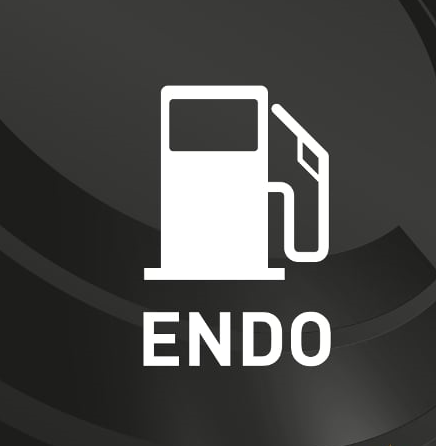Why Fuel?
Why Fuel as an Endurance Athlete?
A fundamental question. Seems like a no-brainer. However, this is the single most mis-understood question across athletes of all backgrounds and stature. So lets make this quite easy...
If you want to learn about the importance of fueling in an efficient and straight forward way, please take the time to watch the 5-minute video below. It is comprehensive and walks you through the fueling process, providing examples of individuals taking on board differing quantities of carbohydrate during exercise and the effect this has on their performance. Once you’ve watched the video, read on to gain a deeper understanding of the fuelling concept.
Quite simply, you can’t store enough carbohydrate to sustain high intensity endurance exercise indefinitely. At a strong focussed pace, your stored carbohydrate (glycogen) reserves will be used up in less than 90 minutes and when you’ve burned your last gram of carbohydrate, your pace will drop off dramatically – this is called ‘Bonking’ in cycling or ‘Hitting the wall’ in running. If you’ve not consumed a carbohydrate-rich diet in the lead up to exercising, you will bonk/hit the wall even sooner. At a slower pace, your glycogen stores will last longer, so pace management is a good way to preserve your onboard glycogen, but this will mean that you’re not going to be travelling very fast!
If you fuel with carbohydrate whilst exercising, every gram of carbohydrate you consume represents a gram of carbohydrate you won’t be burning from your stores, so it means that for any given pace, you will bonk/hit the wall later. It therefore stands to reason that the more carbohydrate you can take on board and process per hour, the longer you will last. Also, as more carbohydrate is burnt at higher exercise intensities, another way of looking at the benefits of fuelling during exercise is that it will allow you to maintain a higher pace for longer and the more carbohydrate per hour you can absorb and use, the more pronounced this will be.
In order to fully understand the benefits of fuelling, firstly, it’s important to understand the differences between ‘Endogenous’ and ‘Exogenous’ carbohydrate:

Endogenous (ENDO) refers to carbohydrate that is stored in your liver and muscles – called ‘Glycogen’. Even on a diet rich in carbohydrate, the most you can expect to store is around 500g or 2,000 kCals (and that’s if you’re a well trained athlete – the less conditioned you are, the less you can store). When your stores are full, they’re full, so high carbohydrate consumption in the hours approaching exercise will have no effect on your stores if they’re already saturated. As an example to clarify this point, it would be like leaving the tap running on the bath – once the water level reaches the overflow, the bath will get no fuller however much water you keep pouring in. This is a vital concept to understand and it’s where many people go wrong when it comes to fuelling for optimal performance. One final and very important point to note about endogenous carbohydrate stores is that when they run out, your metabolism will grind to a halt and your pace will drop off dramatically or you may even collapse. ‘Bonking’ or ‘Hitting the wall’ is not a pleasant experience and it really is ‘game over’ as far as a meaningful physical performance is concerned.

Exogenous (EXO) refers to carbohydrate consumed during exercise and with regard to TORQ products, this would be in the form of TORQ Energy Drink, TORQ Gel, TORQ Bar and TORQ Chew. Any carbohydrate consumed during exercise, even if it’s a banana or jelly babies, are still considered exogenous carbohydrate – they may not be optimal, but they are forms of exogenous carbohydrate. This carbohydrate enters the blood stream and is burnt preferentially over your endogenous stores, but it is the speed that these carbohydrate sources get into your bloodstream that is critical to performance, which is why optimized products like TORQ exist. Exogenous carbohydrate isn’t stored, it’s used straight away and the more you can get into your blood, the less of your stored carbohydrate you need to use. It’s important to note that for high intensity endurance activities, it’s impossible to supply sufficient exogenous carbohydrate to halt the depletion of your endogenous stores, all it will do is slow down the regression.
Play the short clip above. This demonstrates how a cyclist relying entirely on endogenous stored carbohydrate quickly drains his/her stores and becomes fully glycogen depleted after 1 hour and 20 minutes. Note that the exogenous needle doesn’t move at all, because the cyclist isn’t consuming anything whilst exercising. All of these animated clips assume a very high intensity effort (the effort is exactly the same in each example) and you may have to play each one a few times to reach a clear understanding of what’s going on. An endurance athlete’s maximal sustainable intensity is called ‘Anaerobic Threshold’ and that’s the pace that we have assumed for the purposes of these examples.
In the clip above, we demonstrate how every time 30g of carbohydrate is consumed (1 TORQ Unit), the use of this exogenous carbohydrate slows down the burn rate of the endogenous stores, the overall benefit being, the maintenance of pace/performance for a longer time period. In this example, the cyclist lasts another 10 minutes as a result of low level fuelling. Although 1 TORQ Unit per hour certainly isn’t optimal, it’s certainly better than ZERO carbohydrate per hour.
The clip above demonstrates how consuming 60g of carbohydrate per hour extends time to exhaustion further still through the greater preservation of endogenous stores.
And finally, if you play the clip above, notice how much longer the cyclist can sustain his/her performance when consuming 90g of exogenous carbohydrate per hour, which is only possible if all the carbohydrate cosumed consists of 2:1 Glucose-Derivatives:Fructose.
The clip above summarises the 4 different strategies of 0g, 30g, 60g and 90g exogenous carbohydrate consumption per hour and hopefully this makes our message crystal clear. What should also be clear from all these examples is that you should NOT delay in taking on board exogenous carbohydrate – you start consuming from the moment you start exercising, because that’s the only way you’re going to optimise the preservation of your endogenous stores. Additionally, although we have simplified our message in these animations by indicating that the rider takes his/her carbohydrate in discrete 30g units, obviously in reality, you’re not going to consume 500ml of energy drink (30g of carbohydrate) in 1 swift ingestion – any drink consumed will be ‘smoothed’ over the hour. Rest assured – as long as you consume 2-3 TORQ Units per hour in a systematic manner, you will be fuelling properly.
Incidentally, just in case you’re wondering, if we were to run a series of animations showing what happens during lower intensity endurance exercise, the results would be exactly the same in relative terms. All of the cyclists would last longer than if they were exercising at Anaerobic Threshold, because the endogenous burn-rate would be reduced, but the same principles would apply – the greater the exogenous fuel intake, the longer the cyclist would last.
In our final clip above, we pull all of these principles together and demonstrate how fuelling ‘affords’ a higher pace over a given time. In order for the athlete consuming 0g of carbohydrate per hour to be able to sustain a consistent pace for a 2 hour effort, his/her pace needs to be moderated downwards to avoid bottoming-out his/her endogenous stores and bonking – this means riding slower. On the other hand, the athlete on 90g of carbohydrate per hour can afford to push on at a far stronger pace, cover a larger distance and still finish with fuel in the tank. In this example, the well fuelled rider covers 10 more miles over the same time frame and still has 25 to 30% of his/her endogenous stores remaining at the end of the effort. The fact that the endogenous stores are less damaged despite a higher intensity effort is actually fundamental to understanding the principles of the TORQ Recovery System. If you fuel diligently, you will not only have performed better and created a bigger training stimulus, you will also have kick-started the recovery process. More on the TORQ Recovery System if you click HERE.

The TORQ Fueling System doesn’t just simplify the fuelling process, it optimizes it by ensuring that you consume the optimal amount for the best performances. All carbohydrate formulations are NOT equal, so please read the next tab to learn about why TORQ’s multiple-transportable carbohydrate blend enables greater carbohydrate absorption than any other recipe in existence. If you take a look at the final tab, you will find a significant number of independent peer-reviewed published studies supporting our formulations and this information has been essential in establishing the TORQ range and the TORQ Fueling System.
